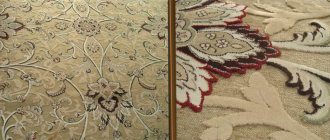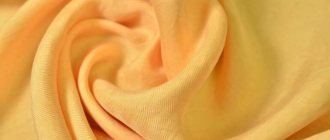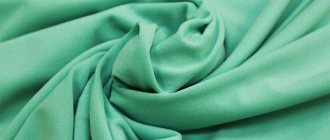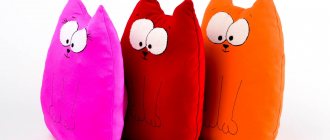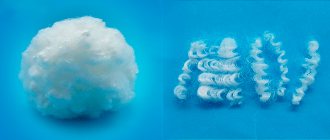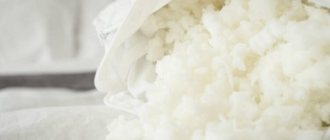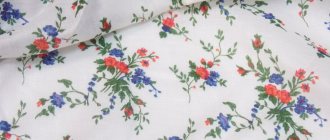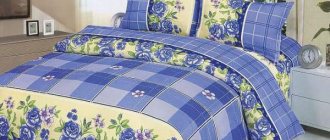Which material is better to choose?
When choosing a carpet, you should pay attention to the materials that are offered in stores. You can purchase a natural or synthetic carpet - both options are suitable for home use. Let's see what advantages these materials can highlight.
Features of natural carpets
Natural raw materials are processed on machines and turned into silk, wool and cotton carpets. Their cost is higher than that of synthetic ones, however, the quality is pleasantly surprising.
Using natural materials, factories create a special, soft pile. Such carpets are especially valuable, and over time they become even more expensive.
Woolen fabrics must be treated with special impregnations that repel dirt and dust, moisture and bacteria. People with allergies should not install wool carpeting.
Lint-free cotton rugs are suitable even for wet and high-traffic areas. Needlewomen hand weave silk carpets with various patterns and ornaments. One, even a small copy, is expensive and lasts a long time.
Natural carpets in stores can be found from cheaper materials: artificial silk, jute.
Features of synthetic carpets
Many people purchase synthetic carpets due to their practicality, bright colors and reasonable cost. They are hypoallergenic and will not harm the health of your family.
A popular synthetic pile material is polypropylene. It is resistant to dust and dirt, easy to clean. Carpets made from another raw material, polyamide, are also resistant to dirt and liquids. Polyamide has a weak side - it fades in direct sunlight.
The best alternative to wool is acrylic pile. It retains all the properties of a natural product, but dries faster and does not cause maintenance problems.
Features of wool carpets
Despite the active filling of the textile market with synthetic materials, natural fibers retain their value . Wool occupies a special place in the weaving industry. It is used to create exclusive textiles, products in the style of Persian patterns and ornamental weaves. Fans of environmental friendliness and luxurious design often choose a wool carpet.
Such items are distinguished by the use of completely natural materials . Most often, manufacturers use sheep wool or combine it with goat or camel wool. These carpets have both a base and a pile pattern woven from wool fibers. You can also find mixed products on the market:
- With a bang.
- With silk.
- With synthetic material.
In good quality products, the ratio of materials will be about 80:30 with a bias towards natural. Cotton and silk threads are often incorporated into a woven product to enhance its luster and elasticity. The admixture of synthetics reduces the cost of the product, and with the correct ratio of natural and artificial materials, all its qualities will be maintained at the proper level.
The price of a wool carpet will not be the lowest. This is explained not only by the environmentally friendly origin of the material, but also by:
- Its quality.
- Country of manufacture.
- Breed and habitat of animals.
- Country and company of production.
- Product design.
An expensive and high-quality product will also have a dense structure and a quality certificate.
Useful tips for choosing
So, we have examined the main selection criteria. Still, what is it like, an ideal palace? We present some practical tips for choosing, with which you can find exactly what you were looking for.
- Correct color
When choosing the color of the rug, be sure to coordinate it with the whole family so that everyone will like the accessory. For the bedroom you should not choose bright colors; a plain and fluffy carpet is quite suitable. In the nursery you can lay a carpet with an unobtrusive pattern, and in the living room - one that matches the color accents, in a bold shade and with multi-level pile.
- Noise insulation
A good carpet hides sounds. If it's double-layered, you won't hear your loud neighbors downstairs and, in turn, won't bother them with heavy footsteps.
- Comfort and warmth
Many people place carpets on linoleum, tiles, or laminate because it is uncomfortable to walk on a cold and slippery floor. Choose a pile that is warm and pleasant to the touch.
- Suitable size
With the help of a carpet, you can divide a room into several zones: a work area and a relaxation area. You shouldn’t buy a big rug, lay down carpet instead. By the way, small rugs will have a place in the bedroom - dip your toes in the soft fluffy pile every morning.
- Durability and strength of the material
You should not buy the cheapest copies, they will not last long. Choose a carpet with a thick backing and dense lint.
- Health safety for the whole family
Natural carpets can cause allergies - you should not put them in the bedroom. As for synthetic ones, they are hypoallergenic.
Rely on the basic principles, choose the best for yourself.
Polypropylene carpet for children's room
A carpet for a children's room must meet the following characteristics:
- hypoallergenic;
- naturalness;
- softness;
- ease of care.
Despite the advantages of natural materials, they have one significant drawback - the ability to cause allergic reactions. Otherwise, a children's polypropylene carpet meets three of the four criteria. This material is hypoallergenic and easy to clean. Products of a wide variety of shapes and colors are made from polypropylene, with a long pile and a pleasant-to-touch surface.
Pros and cons of carpets in an apartment
Is it worth buying a carpet for an apartment? How practical would such a solution be for the home? First, let's look at the disadvantages of having carpet:
- Natural lint can cause allergies among residents of the house
- It is necessary to carry out vacuuming weekly, and wet cleaning of lint once every two weeks.
- The carpet may lose brightness or become thinner - you will need to purchase a new one
There are many positive aspects of having carpet in your home:
- Gives accents to the room and complements the overall design of the room
- Allows feet to stay warm and comfortable without slippers
- Conceals excess noise - good for both you and your neighbors
- Allows children to play without fear
- Makes your apartment more comfortable: taking off your formal shoes after work, you can walk along the improvised lawn and relax
Choose a rug that will appeal to the whole family, and it will delight you with its impeccable quality for a long time.
Advantages of a silk carpet
- Chic and sophisticated appearance.
- Thanks to their natural composition, the products are environmentally friendly, hypoallergenic, safe for health, and can be used by everyone without exception.
- Strength and durability (with proper care and use).
- They retain their original appearance for many years, since silk is not afraid of direct sunlight, the colors do not fade or fade.
- Does not accumulate static electricity.
- I make real silk carpets only by hand, working with very delicate and thin material, carefully working out the smallest details. That is why they are so highly valued by specialists and collectors.
Carpets made of synthetic materials
Viscose carpets
This artificial product of processing wood cellulose, due to its characteristic shine, was once called “artificial silk”. Carpets made of viscose, which perfectly imitates natural silk, shimmer beautifully in the light. They are quite lightweight, and their airy structure makes the interior “lighter”. The main advantages of viscose:
- hygroscopicity;
- allows air to pass through;
- pleasant to the touch;
- does not accumulate static electricity;
- does not wrinkle and does not rub off.
Viscose dyes well, so carpets made from it are very bright.
Viscose carpets are noticeably sensitive to moisture, and when wet, they significantly lose strength, so they should only be cleaned dry.
With proper care they are quite durable. The high wear resistance of the material allows you to lay viscose carpets in fairly crowded rooms, for example, a living room.
In particular, carpets are made from viscose using the “frieze” technology, which uses long twisted fibers. These fibers are fixed into the base through special heat treatment, then they are cut. The pile in the finished carpet is not cut, as a result of which its fibers are multidirectional, and the surface of the carpet takes on a “curly” appearance. Frieze carpets have sufficient wear resistance, and their heterogeneous structure hides dirt and traces of footsteps well.
Carpets made of polypropylene
Polypropylene fiber is the most common; it is used in carpet weaving both for making the base and as pile.
Polypropylene carpets have the following positive properties:
- almost do not fade in the sun;
- easily part with stains and get dirty slightly;
- do not wrinkle;
- do not absorb moisture;
- do not cause allergies;
- are not electrified.
Polypropylene is similar in appearance to wool and comes in a variety of colors.
Polypropylene yarn is always dyed before it becomes part of the rug, so the colors on the finished products are extremely durable.
These canvases are not only bright and very inexpensive, but can also last a long time.
Acrylic carpets
Acrylic also feels and looks like wool and has its own advantages:
- richness and brightness of colors;
- not afraid of fungi and moisture;
- does not get very dirty;
- very soft.
The production of carpets from acrylic fiber has become possible as a result of the development of new technologies, including selection, dyeing and spinning of the fiber.
As a result, finished products are purchased:
- a peculiar shine;
- incredible lightness;
- excellent wear resistance;
- excellent insulating properties;
- do not fade;
- easy to care for.
Carpets made of polyester (polyester)
Polyester fiber also has pros and cons. Fabric made from it, as well as from many synthetic fibers:
- very resistant to wear;
- does not fade in the sun;
- easy to clean.
However, stains of dirt and grease can remain permanently on such a carpet if they are not removed immediately.
Touching polyester is tactilely reminiscent of touching wool. But just like wool, it can lose its shape after washing if it is not dried properly.
Carpets hit set
The name of these carpets comes from English from Heat Set or heat setting - “thermal setting”. This is, in fact, the same polypropylene, just improved by an additional stage of technological processing. This fiber is most often found in higher quality carpets. Synthetic carpets from the hit set have the following additional properties:
- increased strength;
- higher heat resistance;
- antistatic.
Externally, these carpets look more luxurious than products made from ordinary polypropylene, since their pile is less crushed. In appearance and tactile sensations, the carpet from the hit set resembles wool.
Shaggy carpets
Carpets belonging to this group are distinguished by twisted threads that form a long, silky pile and fashionable colors. Each fiber in them consists of a single long (5 cm) and thick artificial thread. Shaggy carpets are especially popular in Europe.
Advantages of shaggy carpets:
- Their appearance suits not only classic interiors, but also minimalism.
- Their fluffy, very soft pile is very pleasant to the touch.
- Blurry or monochromatic designs instill a unique style and special warmth into the room.
- The material does not fade in the sun and does not cause allergies.
- Cleans well.
- Low cost with high quality materials.
Carpets made of polyamide (nylon)
This is one of the most common synthetic materials used in the manufacture of carpets.
Nylon carpets have the following advantages:
- Strength.
- Bright colors.
- Elasticity.
- Relative resistance to fire.
- Durability and wear resistance.
- The shine of polyamide fibers gives products made from it a special decorative effect.
- During use they do not lose their shape.
- Nylon carpets are not afraid of the destructive influence of microorganisms.
- They are easy to wash and dry very quickly.
Among the disadvantages of polyamide carpets are:
- They fade noticeably in the sun.
- Gradually they become hard and brittle.
- Capable of being highly electrified.
Carpet weaving centers
Ancient Persia (its modern name is Iran) is recognized as the ancestor of the craft in the world. Handlooms are still in use here, and Iranian carpets are the best. Turkish works of carpet art compete with them in popularity. In third place is Chinese silk. Indian, Pakistani, and Turkmen silk carpets are in demand.
Iranian
Iran is traditionally the largest producer of handmade carpets. Everyone in the world knows Iranian carpets. This is the calling card of the country, so quality is monitored here.
Indian silk carpet
Iranian handmade silk carpets are made from the best raw materials and natural dyes. They are distinguished by a single Iranian knot, a design with an ornament of flowers and leaves, and images of animals; warm tone combined with rich colors.
Silk Persian carpets are woven in the only region of the country - Qom. They are more valuable than woolen or combined ones. Carpets from Qom are distinguished by low pile and a background in brown-beige, turquoise-light green, and ivory shades. Iranian carpets from Qom are distinguished by their ornaments - squares decorated with floral patterns.
Silk carpet from India
Turkish
A Turkish silk carpet consists of a warp and pile threads. It is woven using double knot or symmetrical knitting technology.
The primary colors, beige and brown, symbolize peace and tranquility. One of the main attributes is an ornament in the form of lines, flowers, leaves, trees, figures, signs and symbols.
The center for the production of magnificent silk carpets is the city of Hereke. Carpets from this brand are recognizable by their softness, pastel shades and floral patterns (in other regions geometric ones are preferred).
Artificial silk carpet
Silk carpet from Kashmir
Chinese
Chinese handmade silk carpets are considered the most valuable in the world. This is an object of hunting for connoisseurs and collectors. The base and pile are made of weightless natural silk, but they are very dense, sometimes surpassing their Persian counterparts in this indicator.
In the Celestial Empire they make carpets, the silk of which has the incomprehensible ability to change shades under different angles and lighting. They are pleasantly cool to the touch.
The symmetrical ornament consists of lush patterns with medallions, borders, and spaces filled in four directions. This is the Beijing style of weaving.
Chinese carpets are characterized by careful attention to the smallest details. The color scheme is the same for all provinces: white, red, black, beige, yellow, blue. Products in pastel colors are exported: pink, turquoise, dark blue. They are ideal for European interiors.
Chinese round silk carpet
Round silk carpet
Indian
Kashmiri silk carpets are considered the best. Wall ones are usually woven from silk on silk (the most expensive) or on a cotton base. Floor carpets are wool and silk carpets.
Carpets from India are famous for their combination of pink, red, blue, green, and yellow colors. They are made in modern or classic design. Classic implies an ornament of plants and flowers - symbols of renewal, health, good luck. Modern style is straight lines that glow in the dark thanks to special processing.
Carpets from Goa are attractive: ligature patterns of trees, exotic birds, animals, flowers, with an intense rich color scheme.
Art Nouveau silk carpet
Silk carpets in the interior
They, like any natural material, resist abrasion much worse than synthetics, they get dirty quickly, and professional cleaning of silk carpets is not cheap. Therefore, they are not laid in rooms with intense movement and a large number of people. In private housing, the optimal solution is an office or bedroom. In public places such as restaurants or hotels, these are attributes of VIP zones. They give status to the office of a manager or business person.
Turkish silk carpet
It’s better to hang it on the wall: its beauty will be revealed to the maximum, it will be admired from all sides and angles.
Such coatings fit organically into oriental or classic interiors. Spacious rooms will be decorated with products of any color and tone, small rooms - with light pastel shades.
Chinese silk carpet in the interior of a country house


